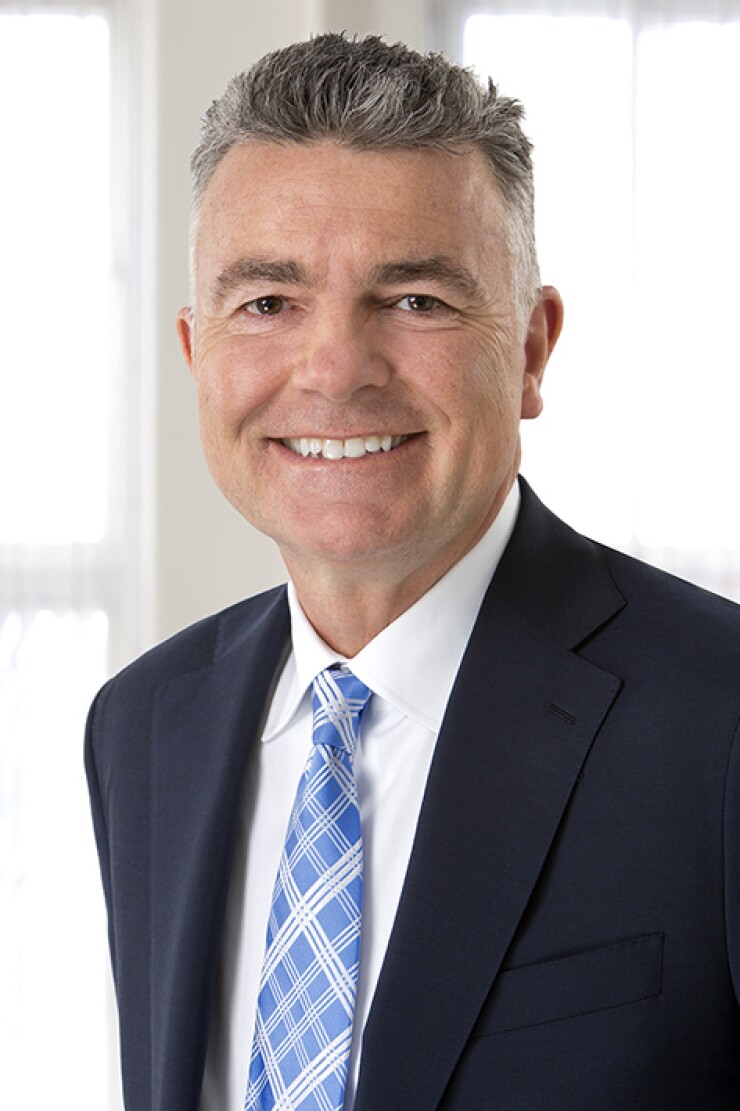When Jim Crowley and I first met two years ago, the COO of BNY Mellon Pershing made some predictions for the future. Granted, the biggest issues at that time were the Department of Labor’s fiduciary rule and the advent of robo advice.
“Firms have to redefine themselves,” Crowley told me on the sidelines of the FSI OneVoice conference in San Francisco. “You’re going to see stories emerging throughout 2017 about how firms, large and small and medium, are going to be making some bold changes in their operating models and in their product choice to drive efficacy, create scale and a better investor experience.”

Fast forward 29 months: Today we are sequestered in a quiet room at Phoenix’s massive convention center, taking a break from Pershing’s bustling Insite conference. I read Crowley that comment from January 2017. Was he right? He laughs and says he was.
“I see a continuation of all those things for the next few years,” he tells me. But, he adds, he’s been surprised by a few upheavals — and the trends he sees now have the potential to upend wealth management even more.
“I did not anticipate how quickly some things were going to happen,” Crowley says. “For instance, the pace at which the passive, beta asset management process took shape. I don't think anyone anticipated the flow away from active as quickly as it actually happened. And now we’re seeing the emergence of much more price competition in the ETF and mutual fund world.”
Still, Crowley adds, “mutual funds are not going away.” He is so keen he repeats the phrase twice.
Crowley will assume his new role as CEO of Pershing in July. I remind him of his “bold changes” comment two years ago. What bold changes must firms undertake now in 2019?
“Will the advisor-client relationship be based on AUM, or will it transition into something else based upon the depth of the relationship that investors are looking for?” he says. “It probably won’t continue to be an AUM basis-point model.”
Robos dominated conversation in 2017. They still do, kind of.

“I would not describe the trend as robos," Crowley tells me. “I would describe it as digitization of the business. The robos created and redefined investors’ experiences. They now expect convenience, simplicity, speed, access. That raised the bar for how we — the financial services industry — need to adapt. And we must. It’s not optional for us.
And when Crowley and I meet again in 2021, what will we talk about?
Crowley looks chagrined. “If we’re sitting here in Phoenix, we’ll probably be talking about the weather,” he tells me, referring to the 110-degree temperature outside the convention center. “I think we’ll still be talking about technology and trends. Will we continue to have a multitude of third-party partnerships, or will the trend go back toward enterprise technology platforms? Will the trend be toward individual portfolio management or will it go back to more model-based portfolio management?”
Crowley answers his own question: “Our crystal ball is this: We think we will be more enterprise-driven from a technology perspective. And there will be more centralized portfolio management ... with flexibility built in with the appropriate surveillance tools.”
Will Crowley be right? Check back with me in two years.





